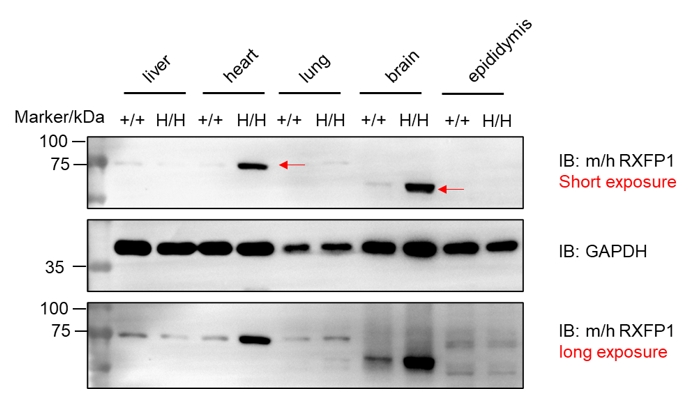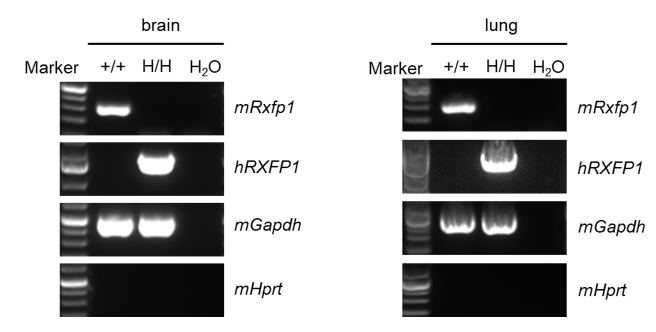B-hRXFP1 mice
| Strain Name |
C57BL/6N-Rxfp1tm1(RXFP1)Bcgen/Bcgen
|
Common Name | B-hRXFP1 mice |
| Background | C57BL/6N | Catalog number |
113095 |
|
Related Genes |
RXFP1; LGR7, RXFPR1 |
||
|
NCBI Gene ID |
59350 | ||
- Relaxin R1 (Relaxin Receptor 1), also known as RXFP1 (Relaxin Family Peptide Receptor 1) or LGR7 (Leucine‑rich G‑protein‑coupled Receptor 7) is a member of family C of the LGRs, and is one of four receptors for Relaxin family proteins. Relaxin R1 shows highest affinity for human Relaxins 1, 2 and 3, while RXFP2 binds Relaxin 2 and the related INSL3, and RXFP3 primarily binds Relaxin 3.
- Engagement of Relaxin R1 by Relaxin (mainly Relaxin 2 in humans) supports female reproduction by promoting uterine angiogenesis, ovarian follicle ripening, and endometrial, cervical and nipple development. In male reproduction, Relaxin R1 acts in the prostate to enhance sperm motility. It reduces fibrosis in the heart, skin, lungs, liver, kidney, and reproductive tissues by combating aberrant collagen buildup. In the vasculature, it mediates vasodilation and decreases blood pressure.
Targeting strategy
Gene targeting strategy for B-hRXFP1 mice. In B-hRXFP1 mice, an internal ribosome entry site (IRES2) fused to full length human RXFP1 cDNA, followed by human 3`UTR, inserted into exon 17 of the endogenous Rxfp1 gene. The human protein expression will be driven by mouse endogenous promoter, while mouse Rxfp1 gene transcription and translation will be disrupted.

Western blot analysis of RXFP1 protein expression in homozygous B-hRXFP1 mice. Various tissue lysates were collected from wild-type C57BL/6 mice (+/+) and homozygous B-hRXFP1 mice (H/H), and then analyzed by western blot with anti-RXFP1 antibody(Invitrogen, PA5-28759). 40 μg total proteins were loaded for western blotting analysis. m/hRXFP1 was obviously detected in heart and brain(red arrow). m/hRXFP1 was weakly detected in liver, lung and epididymis (red arrow).

Strain specific analysis of RXFP1 mRNA expression in wild-type C57BL/6 mice and B-hRXFP1 mice by RT-PCR. Brain and lung RNA were isolated from wild-type C57BL/6 mice (+/+) and homozygous B-hRXFP1 mice(H/H), then cDNA libraries were synthesized by reverse transcription, followed by PCR with mouse or human RXFP1 primers. Mouse Rxfp1 mRNA were detectable in wild-type C57BL/6 mice. Human RXFP1 mRNA was detectable only in homozygous B-hRXFP1 mice but not in wild-type mice.












 京公网安备:
京公网安备: